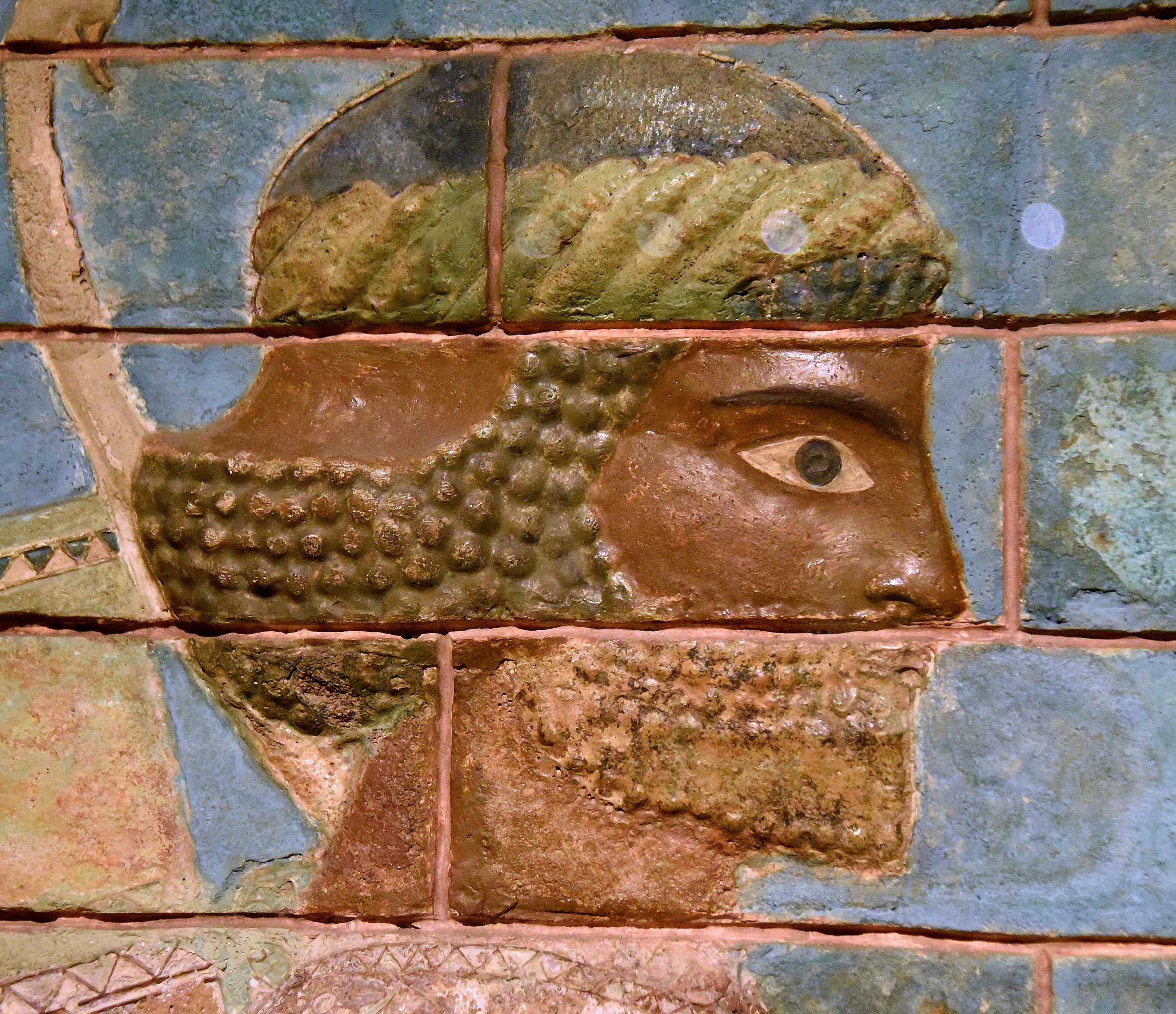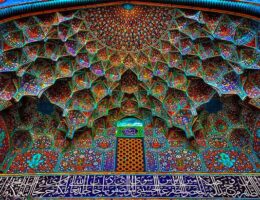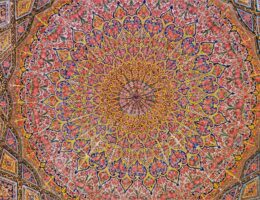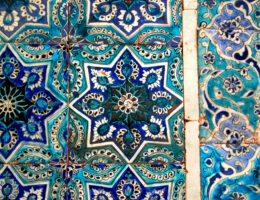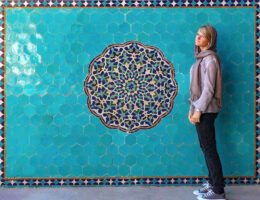IRAN ART EXHIBITION: GLAZED BRICK AND TILE WORKS IN ANCIENT TIMES IN IRAN
History of tile (glazed brick), manufacture and decoration in Iran, goes back to the prehistoric period. It has an important position among the various decorative arts in Iranian architecture. Four main decorative features could be categorized here. They are stone carvings, brick work, stucco and tile panels.
The intricate method of manufacture, designs and type of materials used in these four methods have evolved as a result of natural factors, economical and political effects.
Tiles were used to decorate monuments from early ages in Iran. Mosaic patterns were the first step in the evolution of tile”s decoration. Imaginative and creative artisans put together mosaic patterns using bits of colored stone and brick and created patterns of triangles, semi-circles and circles in harmony with the structures they were placed on. These patterns later evolved into design of natural subjects, such as plants, trees, animals and human beings. The earliest examples of mosaic patterns have come from the columns of the temple at Ubaid in Mesopotamia, and are attributed to the second half of the 2nd mill. B.C. Here, colored pieces of stone have been juxtaposed with shell and ivory to create geometric patterns. It is these early mosaic patterns which are the roots of later tile”s art. The first glazed bricks, a further advancement in tile”s art, have also been discovered in such sites as the palaces of Ashur and Babylon in the same area.
IRAN ART EXHIBITION: The most famous example of early tile”s art on wares is the mosaic rhyton discovered in the excavations at Marlik.
This vessel has two shells. The outer shell is covered with colored pieces of stone. This object is known as “Thousand Flowers”. One of the earliest examples of Iranian tile work on architecture, actually glazed pieces of unbaked brick, has been excavated at Susa and Chogha Zanbil, and is attributed to the end of the second millennium B.C.
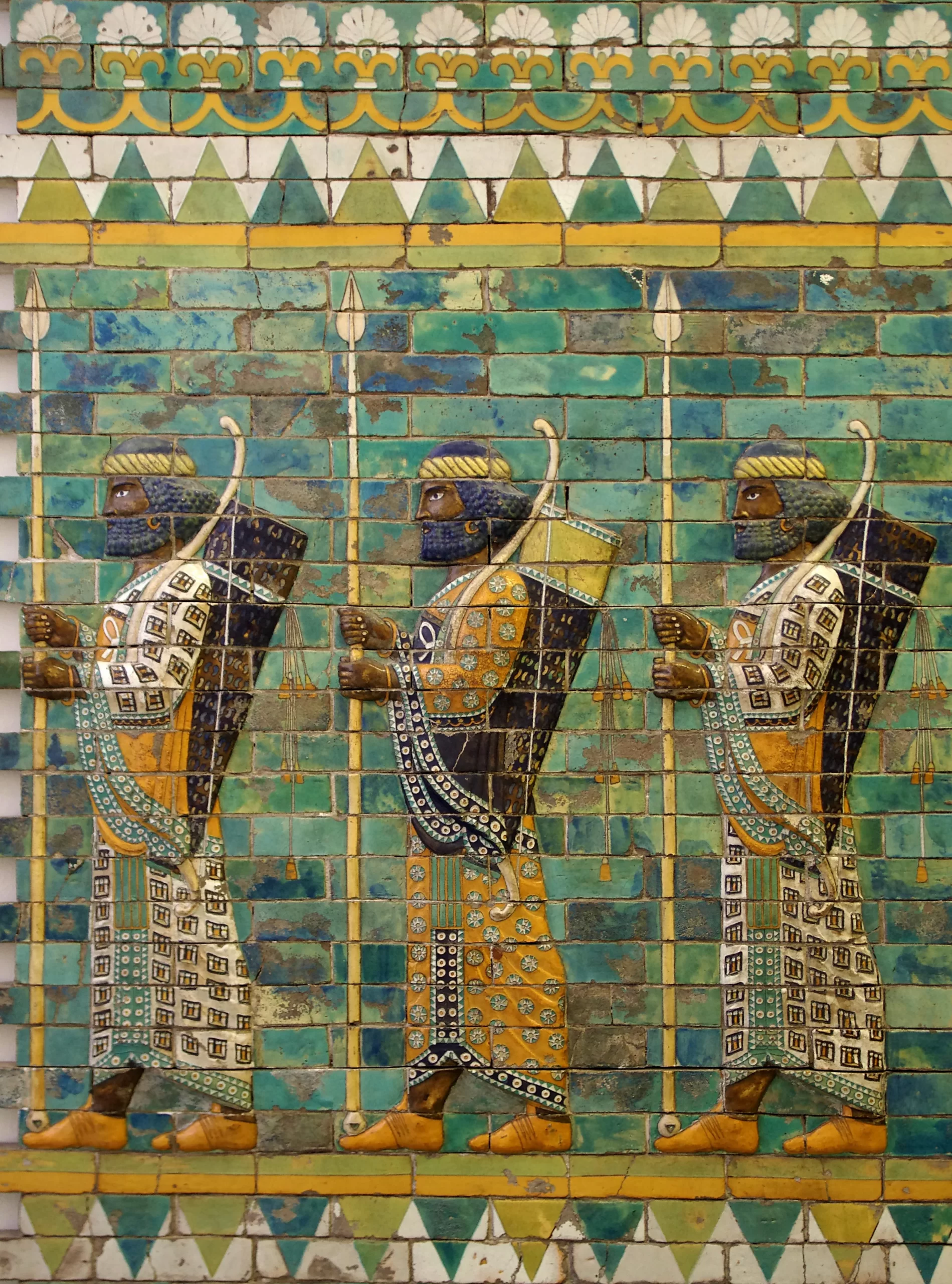
In the Achamenian period full use was made of glazed and decorated fired bricks in yellow, green and brown on the palaces of Susa and Persepolis. Fired and glazed bricks were an important advancement in tile technique.
The “Eternal Soldiers” at Persepolis have long elegant gowns in glaze made of fired earth and plaster
IRAN ART EXHIBITION: Glaze was used on vessels and even coffins in the Parthian period, but little architectural evidence has been discovered to show that glazed bricks were used. Turquoise and light green glaze were the most popular colors. Fresco painting was more popular for the decoration of buildings.
Excavations in Firuzabad and Bishapur have yielded much evidence of tile art and mosaic manufacture for the Sassanid period. Here, tiles have glaze that is one centimeter thick, and mosaic patterns of flowers, plants, geometric designs birds and human beings.
The art of tile working blossomed in the Islamic period of Iran. It became the most important decorative feature of religious buildings.
Iranian tile makers were in great demand and worked in the far corners of the Islamic empire. The earliest example of Islamic tile decoration can be seen on the Mosque of the Dome of Rock belonging to 7-8th century A.D.
